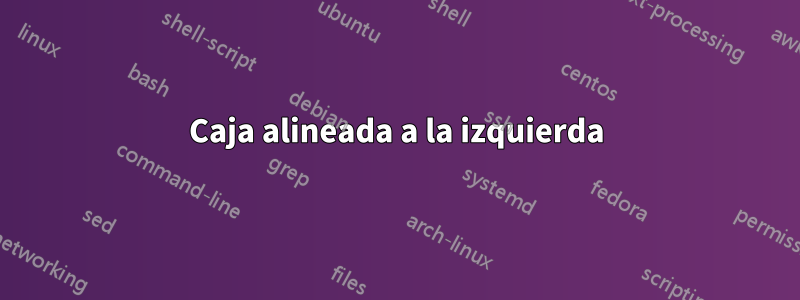
Utilizo en mi manuscrito dos construcciones de látex para dibujar un marco alrededor de un texto que necesitaría alineado a la izquierda.sin cambiar\parindentantes y después de la caja. Pero ambos están impresos en la posición de \parindent.
\documentclass[10pt,twoside,toc=listofnumbered,headinclude,footinclude,index=numbered]{scrbook}
\usepackage[utf8]{inputenc}
\usepackage[T1]{fontenc}
\usepackage[ngerman]{babel}
\usepackage[final]{microtype}
\usepackage{blindtext}
\parindent=7mm
\newenvironment{rfbox}{\begin{minipage}{8.0cm}}{\end{minipage}}
\newcommand{\ffbox}[1]{\vspace{0.0cm}{\fbox{\begin{rfbox} #1 \end{rfbox}}}}
\begin{document}
\blindtext\\
\noindent This is left aligned.\\
\fbox{%
\parbox{8cm}{%
\noindent The box around this should be left aligned.
}}\\
\noindent This is also left aligned.\\
\ffbox{
The box around this should also be left aligned.
}\\
\blindtext
\end{document}
Respuesta1
No estoy seguro de la pregunta, pero tcolorboxes fácil producir cuadros alineados a la izquierda porque es el comportamiento predeterminado.
\documentclass[10pt,twoside, toc=listofnumbered, headinclude,
footinclude, index=numbered]{scrbook}
\usepackage[utf8]{inputenc}
\usepackage[T1]{fontenc}
\usepackage[ngerman]{babel}
%\usepackage[final]{microtype}
\usepackage{blindtext}
\parindent=7mm
%\newenvironment{rfbox}{\begin{minipage}{8.0cm}}{\end{minipage}}
%\newcommand{\ffbox}[1]{\vspace{0.0cm}{\fbox{\begin{rfbox} #1 \end{rfbox}}}}
\usepackage[most]{tcolorbox}
\newtcolorbox{mybox}[1][]{
sharp corners, colback=white, boxsep=0mm, boxrule=1pt, #1
}
\begin{document}
\blindtext
\noindent This is left aligned.
\begin{mybox}[width=8cm]
This is also left aligned
\end{mybox}
\noindent This is also left aligned.
\begin{mybox}[width=8cm]
The box around this should also be left aligned.
\end{mybox}
\blindtext
\end{document}
Respuesta2
Como dijo @daleif, puedes usar \noindentbefore \fbox, pero el paquete framedsimplifica tu trabajo y MWEes:
\usepackage{framed}
\begin{framed}
...
\end{framed}




